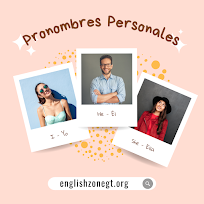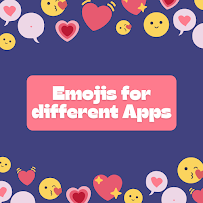REGLAS PARA FORMAR PLURALES
En esta clase aprenderás las reglas para formar un sustantivo singular a plural.
RECUERDA
SINGULAR: Se refiere a un solo objeto, animal o persona.
y
PLURAL: hablamos de 2 o más objetos, animales o personas.
A continuación veremos las reglas para formar plurales.
Acá un ejemplo de cómo formamos plurales en español:
Singular - 1 perro
Plural - 3 perros
Regla # 1: La mayoría de sustantivos agregan únicamente “S” para formar su plural.
SINGULAR PLURAL
Book (libro) Books (libros)
Table (mesa) Tables (mesas)
Computer (computadora) Computers (computadoras)
Veamos unos ejemplos con oraciones.
I am a student. We are students.
Yo soy un estudiante. Nosotros somos estudiantes
That book is red. Those books are red.
Ese libro es rojo. Esos libros son rojos.
Regla # 2: Los sustantivos que terminan en “s, ss, sh, ch, & x” agregan “ES” para formar su plural.
SINGULAR PLURAL
bus (bus) Buses (buses)
dress (vestido) dresses (mesas)
wish (deseo) wishes (deseos)
watch (reloj) watches (relojes)
box (caja) Boxes (cajas)
Veamos unos ejemplos con oraciones.
The bus is yellow. The buses are yellow.
El bus es amarillo. Los buses son amarillos.
The watch is expensive. The watches are expensive.
El reloj es caro. Los relojes son caros.
Regla # 3: Los sustantivos que terminan en “vocal + Y”, únicamente agregan “S” para formar el plural.
SINGULAR PLURAL
Toy (juguete) Toys (juguetes)
Boy (niño) Boys (niños)
Turkey (pavo) Turkeys (pavos)
Key (llave) Keys (llaves)
Veamos unos ejemplos con oraciones.
My key is on the table. My keys are on the table.
Mi llave está sobre la mesa. Mis llaves están sobre la mesa.
The boy is in the park. The boys are in the park.
El niño está en el parque. Los niños están en el parque.
Regla # 4: Los sustantivos que terminan en “consonante + Y”, cambian a “IES”, es decir que vamos a cambiar la “Y” -> a “i” y luego agregamos “ES”.
SINGULAR PLURAL
Baby (bebé) Babies (bebes)
Country (país) Countries (países)
Cherry (cereza) Cherries (cerezas)
Party (fiesta) Parties (fiestas)
Candy (dulce) Candies (dulces)
Veamos unos ejemplos con oraciones.
Russia is a big country. Russia and the USA are big countries.
Rusia es un país grande. Rusia y EEUU son países grandes.
This cherry is very small. These cherries are very small.
Esta cereza es muy pequeña. Estas cerezas son muy pequeñas.
Regla # 5: Los sustantivos que terminan en “O” agregan “ES” para formar el plural.
SINGULAR PLURAL
Hero (héroe) Heroes (héroes)
Potato (papa) Potatoes (papas)
Tomato (tomate) Tomatoes (tomates)
Volcano (volcán) Volcanoes (volcanes)
Mosquito (mosquito) - Mosquitoes (mosquitos)
Veamos unos ejemplos con oraciones.
The potato is salty. The potatoes are salty.
La papa está salada. Las papas están saladas.
The tomato is red. The tomatoes are red.
El tomate es rojo. Los tomates son rojos.
Regla # 6: Los sustantivos que terminan en “F O FE”, cambian esa terminación por “V+ES”.
SINGULAR PLURAL
Calf (ternero) Calves (terneros)
Elf (duende) Elves (duendes)
Knife (cuchillo) knives (cuchillos)
Leaf (hoja) Leaves (hojas)
Scarf (bufanda) Scarves (bufandas)
Veamos unos ejemplos con oraciones.
The calf is cute. The calves are cute.
El ternero es lindo. Los terneros son lindos.
The knife is sharp. The knives are sharp.
El cuchillo está afilado. Los cuchillos están afilados.
Regla # 7: Esta regla hace referencia a los sustantivos irregulares, que son aquellos que no agregan “s” pero cambian su estructura para formar el plural.
SINGULAR PLURAL
Man (hombre) Men (hombres)
Woman (mujer) Women (mujeres)
Child (niño) Children (niños)
Tooth (diente) Teeth (dientes)
Sheep (oveja) Sheep (ovejas)
Veamos unos ejemplos con oraciones.
The man is intelligent. The men are intelligent.
El hombre es inteligente. Los hombres son inteligentes.
The sheep is dirty. The sheep are dirty.
La oveja está sucia. Las ovejas están sucias.





